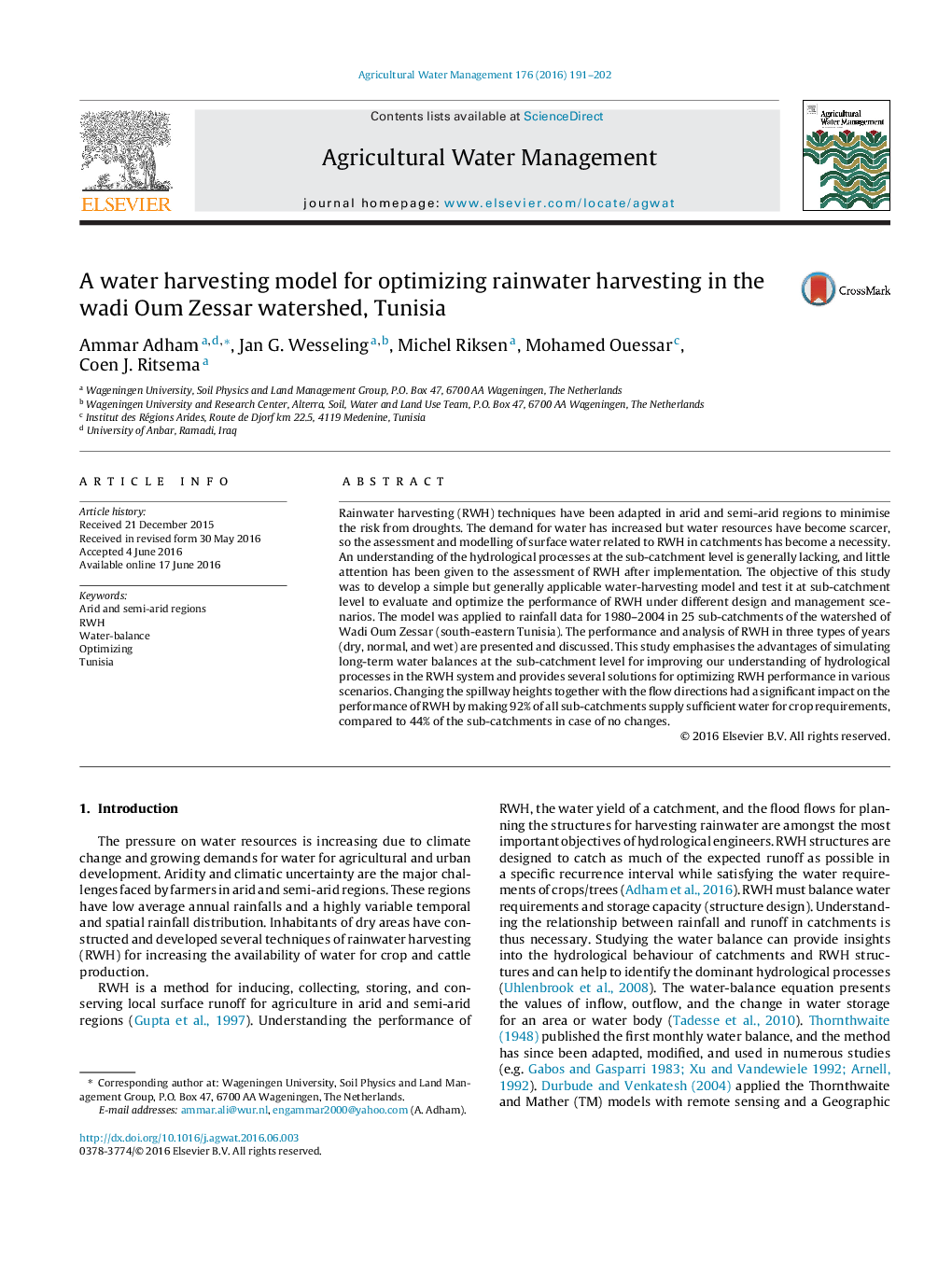| کد مقاله | کد نشریه | سال انتشار | مقاله انگلیسی | نسخه تمام متن |
|---|---|---|---|---|
| 4478247 | 1622904 | 2016 | 12 صفحه PDF | دانلود رایگان |
• A simple water balance model to optimize RWH systems is presented.
• The model is applied at sub-catchment level for various cases and temporal scales.
• The efficiency of RWH nearly doubles when all sub-catchments jointly are connected.
• Flow direction had a significant impact on optimizing RWH performance.
• The model is based on general physical principles and can be applied elsewhere also.
Rainwater harvesting (RWH) techniques have been adapted in arid and semi-arid regions to minimise the risk from droughts. The demand for water has increased but water resources have become scarcer, so the assessment and modelling of surface water related to RWH in catchments has become a necessity. An understanding of the hydrological processes at the sub-catchment level is generally lacking, and little attention has been given to the assessment of RWH after implementation. The objective of this study was to develop a simple but generally applicable water-harvesting model and test it at sub-catchment level to evaluate and optimize the performance of RWH under different design and management scenarios. The model was applied to rainfall data for 1980–2004 in 25 sub-catchments of the watershed of Wadi Oum Zessar (south-eastern Tunisia). The performance and analysis of RWH in three types of years (dry, normal, and wet) are presented and discussed. This study emphasises the advantages of simulating long-term water balances at the sub-catchment level for improving our understanding of hydrological processes in the RWH system and provides several solutions for optimizing RWH performance in various scenarios. Changing the spillway heights together with the flow directions had a significant impact on the performance of RWH by making 92% of all sub-catchments supply sufficient water for crop requirements, compared to 44% of the sub-catchments in case of no changes.
Journal: Agricultural Water Management - Volume 176, October 2016, Pages 191–202
